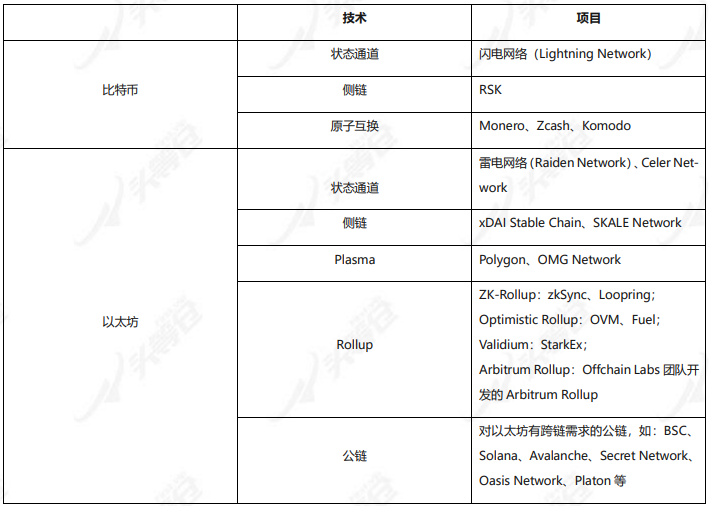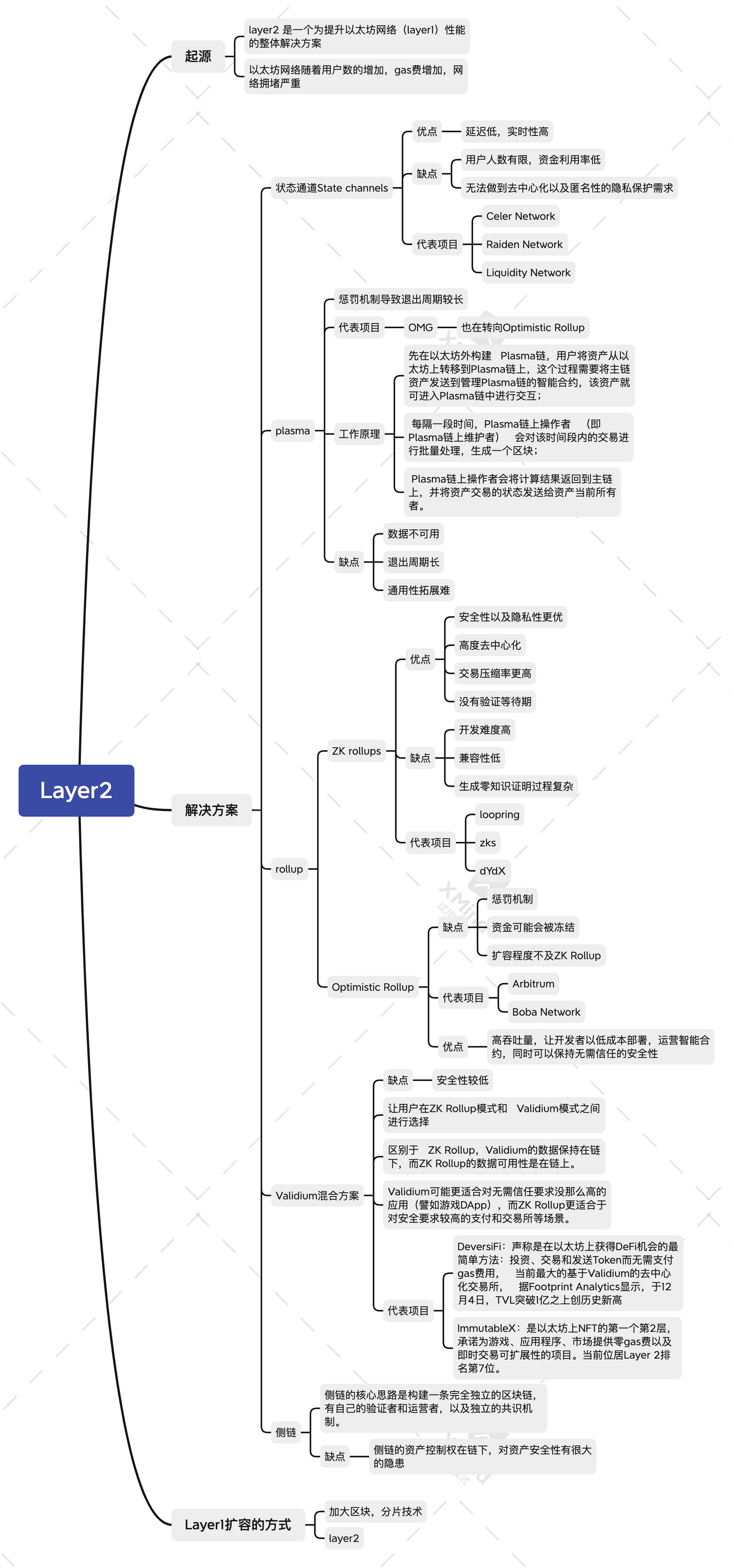Why do we need layer2?
Layer2 is a holistic solution to improve the performance of Ethereum (layer1). As users increased, gas fee on Ethereum has become more expensive and the network become crowed.
- Expansion on layer1: Enlarge the block; sharding.
- Expansion on layer2:

Which is the best?
A process from State Channels→Sidechain→Plasma→Rollup, in fact, this is also a layer2 development process.
Vitalik said that in the short term, Optimistic Rollup is a viable option, while in the long term I prefer ZK Rollup.
Each application should consider whether to completely migrate to one Rollup, support all Rollups, or continue to exist on Ethereum but build a cross-chain bridge with Rollup.
As for users, infrastructure is the key point. ENS stands for Ethereum domain system, which means it’s a decentralized domain system based on Ethereum.
ENS is a very important piece of infrastructure; the second piece of infrastructure is light clients.
Layer 2 is the future of Ethereum expansion. Replying on Layer2 to realize the expansion of Ethereum is the safest solution at present. For the expansion of Ethereum, it is very important to maintain the decentralization of the network while realizing the function, because decentralization is the core of the blockchain.
How Layer2 will evolve in 2022
Rollup aims to solve the trilemma of modular execution. By creating a transaction execution environment separate from Ethereum, they are freed from the responsibility for consensus and data availability. This allows Rollup to benefit from high scalability, security, and decentralization without affecting either.
All in all, the key trends in expansion that we will see in 2022 include bridges, fee reductions, mergers, and developer migrations. While there will be significant progress in EVM compatibility and EVM equivalence this year, we won't see L2 overtake L1 in TVL anytime soon.

Some tool sites about Layer2
L2BEAT has two core functions. It counts the data on the “total value locked” of all the assets of the Ethereum L2 network in the “narrow sense”, and organizes some comparisons of the risks of each L2 network. The disadvantage of this tool is that the data update is not particularly timely, and because it only includes the second-layer network in the narrow sense, it does not include Polygon (PoS) or other compatible EVM sidechain data.
You can view the overall situation of all Layer 2 networks as well as the trend of a single Layer 2 network.
Another particularly useful feature is the ability to quickly view the characteristics, risks, and tradeoffs of individual L2 networks. It is estimated that not many people will remember so much information, just forget to check L2BEAT, and this information should be updated at any time as the network progresses.
How much money can each layer 2 network save for users? Just use the L2Fees to check the real-time data. However, the network currently supported by the website does not cover many, only including:
- Loopring
- zkSync Polygon
- Hermez
- Arbitrum One
- Optimism
- Aztec
- Ethereum
The cross-chain bridge contract data produced by Coinbase protocol expert Elias Simos on the Dune Analytics platform can be used as an extension of L2BEAT's data. The dashboard aggregates the asset data in the addresses of most bridge contracts and then produces relevant trends chart.
The Bridge Away (L1 Ethereum) dashboard not only includes the bridge contract of the layer2 network, but also includes the broader layer2 and sidechain, public chain and other data, such as Solana, Fantom, NEAR, etc.
If you want to know the TVL data of each project in each layer2 network (DeFi), you can view it through DeFi Llama. They support a lot of networks, not only L2 related networks.
arbee.info is a K-line query tool for the Arbitrum ecosystem.
As a DeFi transaction protocol for multi-L2 deployment, Uniswap has made a data website for its V3 version, which currently includes the mainnet
, Optimism and Arbitrum. Uniswap.info can check the price, trading volume, TVL, liquidity and other data of each token, and it is still in the Alpha stage.
💰Asset Tracking Management Tool
Defi wallet and asset management tool DeBank already supports other EVM chain-compatible asset tracking features such as Optimism and Arbitrum. Rabby, a browser plugin wallet owned by DeBank, already supports these networks.
Zerion has preliminary support for Optimism and Arbitrum, but there are not many supported protocols, and the charting function has not yet been released.
Zapper has also supported several networks such as Polygon, Arbitrum, Optimism, etc.
Ape Board currently only supports Arbitrum and other networks.
🧾Transaction data query (block browser)
Most of the block explorers related to the Ethereum ecosystem are developed by the Etherscan team. In fact, they are the skinned versions of the Etherscan products, and the functions are almost the same.
Blockscan is an aggregator of block browsers launched by the Etherscan team, which can search the addresses and transaction data of Ethereum accounts in different L2 networks or EVM-compatible networks in one portal.
For example, you can search the data of Vitalik Buterin's address in various networks, just enter his Ethereum address.
A block explorer focused on the Arbitrum One network, based on Etherscan. You can also view individual address data and trends in the network.
A block explorer focused on the Optimism network, based on Etherscan. You can also view individual address data and trends in the network.
🛠Developer related
Biconomy provides a set of services for developers, Hyphen, for L2 and cross-chain, which can quickly transfer assets between different EVM-compatible chains and L2 networks. For more information about Hyphen, please refer to Chain News' previous article "Five Minutes Quick Look at Biconomy's Cross-Chain Transfer Infrastructure Hyphen".
Infura under Consensys is one of the must-have tools for Ethereum developers. In addition to the Ethereum mainnet, Infura has supported the mainnets of Polygon, Optimism and Arbitrum.
Alchemy is also a very powerful developer tool, providing API services for developers, and currently supports Polygon, Optimism and Arbitrum networks in addition to the Ethereum mainnet.